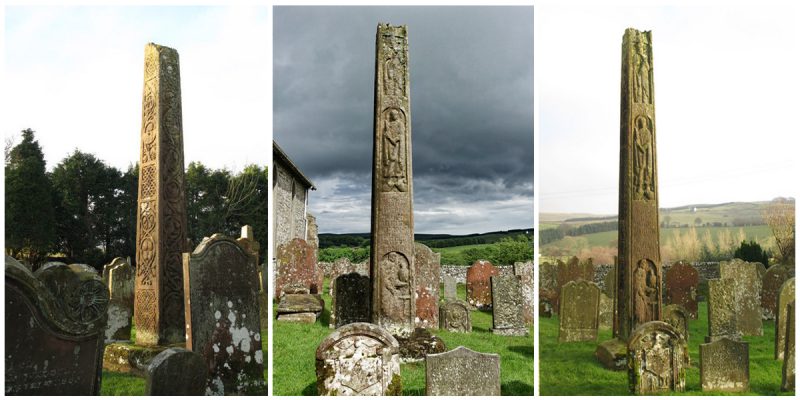The Bewcastle Cross is a superbly carved late 7th or early 8th century Anglo-Saxon cross which is still in its original position standing in the churchyard of the remote Cumbrian hamlet of Bewcastlein, an English county of Cumbria.
It is presumed to have once been a cross since the head of the cross is missing. It still stands 14 ft 6 above the pedestal and almost squared in section 22 x 21 1/4 inches (56 x 54 cm) at the base, and there are no surviving crosses in this region that may be closely compared with its overall layout, its motifs, or the quality of its carving.
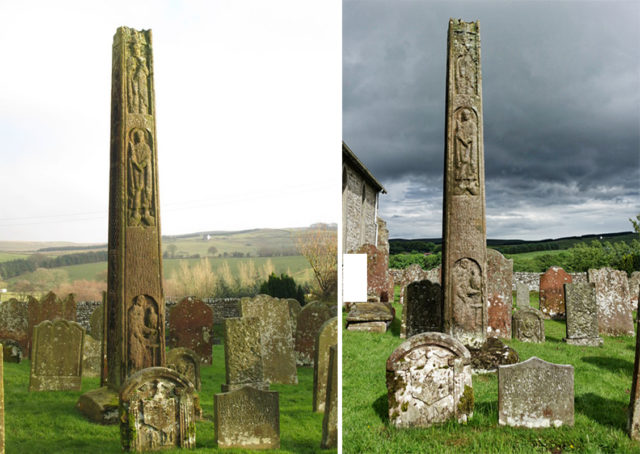
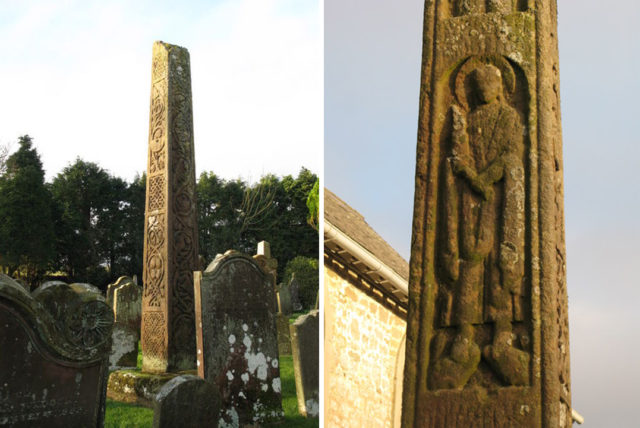
The cross-shaft is richly sculptured with Biblical and other religious and non-religious decoration on its four sides. The sundial on its surface is the oldest in Britain, divided into the four ‘tides’ which governed the working day in medieval times.
The main carvings are on the west face of the cross, and they show three Biblical figures; John the Baptist, Christ trampling on the heads of beasts, and a figure which may be St John the Evangelist with his eagle or hawk perched on his wrist. It is not known exactly when the Bewcastle Cross was crafted, but a date shortly after 675 AD has been suggested.
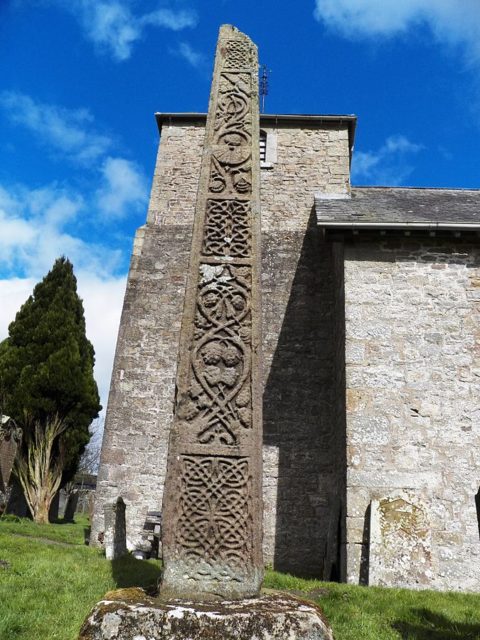
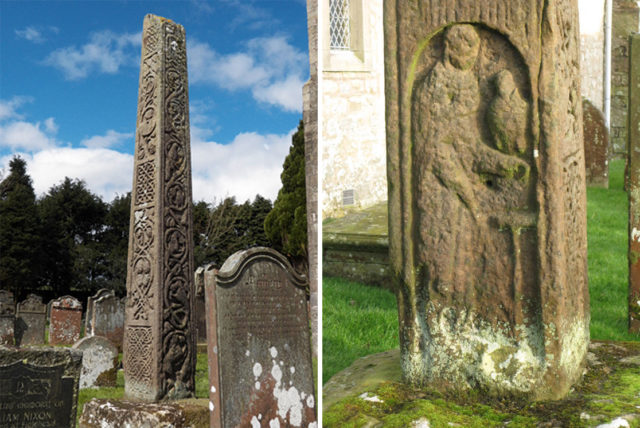
Aside from the decorative carvings, there are runic inscriptions around the lower section of the cross.
Scholars have contended that only the name Cyneburh is definitely decipherable on the cross, suggesting that the monument was a memorial to Alchfrith, son of Oswiu of Northumbria who ruled Northumbria which included Cumbria, the northern Pennines and Scottish borders between 685-704 AD, and was said to have been a scholarly ruler, a patron of the arts, and generous to the monastic church during the late 7th century.
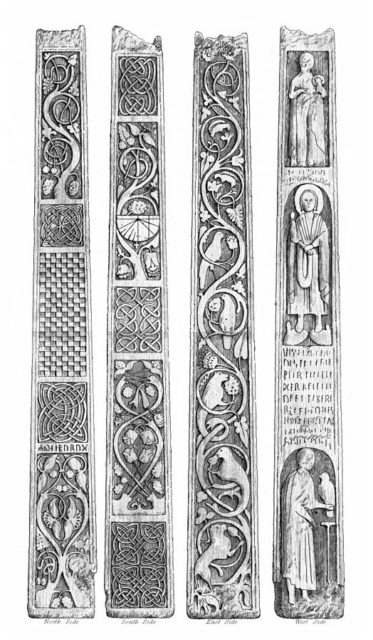
Apart from the Ruthwell cross (a stone Anglo-Saxon cross probably dating from the 8th century), just over the border in Scotland, there is nothing as perfect as these two, of comparable age, in the whole of Europe. They are the largest and most elaborately decorated Anglo-Saxon crosses to have survived intact.
A replica of the cross, including a guess at the missing part, is located in the churchyard of the Wreay Romanesque Church near Carlisle. The Wreay cross differs in style and detail from the original and has been described as a “reinvention”.
